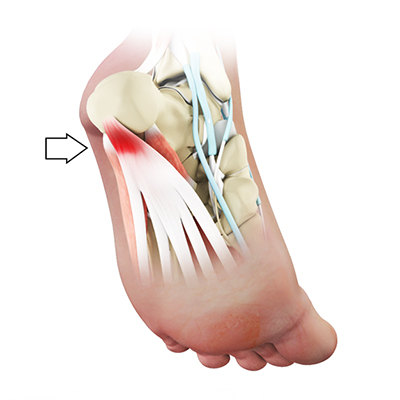 Do you find that completing your Christmas shopping, taking the kids out to the Houston Zoo or Kemah Boardwalk excruciatingly painful because of heel pain?
Do you find that completing your Christmas shopping, taking the kids out to the Houston Zoo or Kemah Boardwalk excruciatingly painful because of heel pain?
Does heel pain with first steps in the morning drive you down?
Heel pain is a common problem we see and in most cases, very treatable.
A common cause of heel pain is plantar fasciitis.
It involves inflammation of a thick band of tissue that runs across the bottom of your foot and connects your heel bone to your toes (plantar fascia).
Plantar fasciitis commonly causes stabbing pain that usually occurs with your first steps in the morning. As you get up and move, the pain normally decreases, but it might return after long periods of standing or when you stand up after sitting.
Plantar fasciitis is more common in runners. People who are overweight and those who wear shoes with inadequate support also have an increased risk of plantar fasciitis.
Symptoms
Plantar fasciitis typically causes a stabbing pain in the bottom of your foot near the heel.
The pain is usually the worst with the first few steps after awakening, although it can also be triggered by long periods of standing or when you get up after sitting.
The pain is usually worse after exercise, not during it.
Causes
Your plantar fascia is in the shape of a bowstring, supporting the arch of your foot and absorbing shock when you walk.
If tension and stress on this bowstring become too great, small tears can occur in the fascia.
Repeated stretching and tearing can irritate or inflame the fascia, although the cause remains unclear in many cases of plantar fasciitis.
Risk factors
Even though plantar fasciitis can develop without an obvious cause, some factors can increase your risk of developing this condition. They include:
· Age. Plantar fasciitis is most common between the ages of 40 and 60.
· Certain types of exercise. Activities that place a lot of stress on your heel and attached tissue — such as long-distance running, ballet dancing and aerobic dance — can contribute to the onset of plantar fasciitis.
· Foot mechanics. Flat feet, a high arch or even an abnormal pattern of walking can affect the way weight is distributed when you're standing and can put added stress on the plantar fascia.
· Obesity. Excess pounds put extra stress on your plantar fascia.
· Occupations that keep you on your feet. Factory workers, teachers and others who spend most of their work hours walking or standing on hard surfaces can damage the plantar fascia.
Complications
Ignoring plantar fasciitis may result in chronic heel pain that hinders your regular activities.
Changing the way you walk as a way to relieve plantar fasciitis pain might lead to foot, knee, hip or back problems.
Contact Us
If you or a loved one is suffering from heel pain, Dr. Javier Rios can work on finding the nonsurgical solution to get you back to life, work, and sports without heel pain. Contact us











